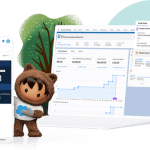The ecommerce industry is set to witness rapid adoption of headless commerce over the next two years. As brands compete to generate greater sales with hyper-personalised CX, headless commerce offers the scale, speed, and cost-effectiveness required to succeed.
However, every technology comes with its own share of challenges. This demands that organisations evaluate various factors before they opt for headless commerce.
Is headless commerce right for every company?
Headless commerce is ideal for any organisation that wants to create a customisable and personalised storefront experience for its customers quickly and efficiently. And aims to do this without disrupting their backend framework.
Sounds right for your company?
While headless commerce is the new buzzword around town, there are some scenarios where investments in this technology may not deliver the expected returns.
- Organisations that are only starting on their digital transformation journey should ideally start with the traditional, template-based approach. Once operational stability is achieved, they can experiment with headless commerce, get familiar with the technology, and scale it up.
- Companies with best-selling products that drive enough customers to the website and app need not really invest additional resources in headless commerce. For example, a dynamic, evolving website design might not deliver any immediate incremental value to a luxury watchmaker, since its customer base would still prefer the overall experience of buying a watch in an authorised brick-and-mortar store.
- Thirdly, as always, customer preference is key – an organisation where most customers prefer a consistent and familiar UI and UX may not gain much by offering personalisation.
So, how do you decide whether headless commerce is the right way for you to go?
A phased approach to headless commerce is a safe bet
A good place to start is to implement headless commerce as a pilot project for a single brand, market, or product category. This will enable you to understand its impact in the context of your customers and business goals. Depending on the results, you can implement it across your business. This measured approach can help you sidestep challenges around investments, tech resource allotment, operations, and the limitations of a smaller talent pool.
If you decide that headless commerce is right for you,
What are the key factors for the smooth implementation of headless commerce?
Reliable in-house tech capabilities
First, consider your organisation and team’s tech capabilities. Although headless commerce entails low-code or no-code front-end development, you still need a team capable of using multiple back-end APIs efficiently and having the front-end programming capabilities that headless commerce demands. Outsourcing headless commerce management to a vendor is an option, but does mean higher costs, time lags, and reduced flexibility.
Strong creative resources
For headless commerce to effectively provide a delightful CX, companies require creative talent with a bold, customer-centric vision. They should be digitally savvy and have a strong understanding of social commerce to create real-time experiences using customer data. Otherwise, implementing headless commerce adds no incremental value to the customer.
Unsure where to start? Opt for Salesforce’s flexible solution
While transitioning from a traditional ecommerce website or store to one powered by headless commerce, businesses need an approach that offers flexibility and wider choice.
Salesforce Commerce Cloud allows you to switch between traditional, hybrid, and headless architectures easily. With Commerce cloud, you can choose between:
- A monolithic digital asset where the front and back-end systems are connected
- Hybrid, a template-based approach that allows more front-end flexibility without separating the back-end
- Headless storefronts with decoupled front and back-end systems.
With Commerce Cloud’s headless storefront, developers can choose their own front-end path, test CX changes and compare results with minimal deployment risk and 90-second rollback windows. Scalable commerce APIs, developer efficiency tools, AI-powered personalisation, a Progressive Web App storefront, and a proven partner ecosystem let you reduce time-to-value and lower the total cost of ownership.
Deliver innovative experiences for your customers with less




























